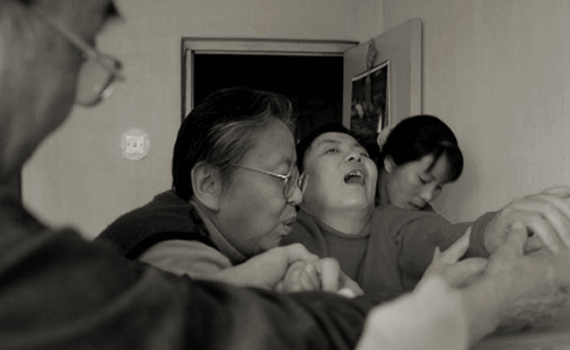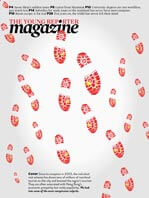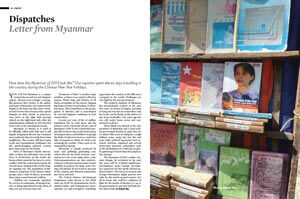Letter from Myanmar
- 2013-04-11
How does the Myanmar of 2013 look like? Our reporter spent eleven days travelling in the country during the Chinese New Year holidays.
You will feel Myanmar is a unique country the second you exit Yangon's airport. All men wear a longyi, a sarong-like garment that reaches to the ankles, and many of them have red-stained teeth, thanks to the betel nut they chew. Women have brown faces because they spread thanaka on their cheeks as sunscreen. Cars drive on the right with steering wheels on the right-hand side, after the administration suddenly in 1970 decided it has to be so for astrological reasons.
Myanmar, or Burma as it used to be officially called until 1989 and is still largely designated abroad, has remained more authentic than its South-East Asian neighbours. The country still faces many social and humanitarian challenges, but the quick-changing political context gives some hope for the future.
Parts of Myanmar remain inaccessible, as there are still ethnic wars in the West or North-East. In the South, the Karen ethnic minority has been in active conflict with the central government for over 60 years, making it the world's longest ongoing war. The population of Myanmar is composed of 135 distinct ethnic groups, and a code of silence surrounds those deep-rooted internal conflicts.
Children are commonly exploited for service in restaurants, cleaning in hotels, or doing agricultural works. Most of them are not even ten years old.
Treatment of litter is another huge problem, as there is no central collection system. Plastic bags and detritus of all kinds accumulate on the streets, shaping big heaps of waste in townships of suburban areas. This contributes to the propagation of diseases, and is exacerbated by very bad hygienic conditions in food conservation.
Seventy per cent of the 62 million population live in rural areas, and the primary sector represents 40 per cent of Myanmar's GDP. In the countryside people still use horse carts as the main means of transportation, and buffaloes to plough the fields. It takes two hours to crush four kilos of peanuts to obtain oil, with a cow actioning the crusher. Time seems to be suspended in Myanmar.
Electricity is mainly produced by noisy and polluting generating sets, which often do not work 24 hours. General power cuts occur many times a day. Telecommunications are also underdeveloped, as the government made it unaffordable on purpose for many years. Foreign cell phones do not work in any part of the country, and Internet connections are scarce and slow.
The United Nations Development Programme ranks Myanmar as the 149th state out of 187 for Humanitarian Development Index, and Transparency International, an anti-corruption watchdog, appreciates the country as the fifth most corrupted in the world. Challenges are very high for the new government.
The political situation of Myanmar has tremendously evolved in the past two years. In streets of Yangon, portraits of Aung San Suu Kyi are everywhere and her books can be found on the shelves of any street bookseller. Two years ago she was still under house arrest and constrained to silence.
Thein Sein was elected as the new president of Myanmar and a semi-civilian government formed in April 2011, after almost fifty years of ruling by a tough military junta. Aung San Suu Kyi and some other political opponents were released, elections organised and several democratic measures undertaken, such as the abolishment of a 1988 ban on public gatherings of more than five people in late January.
The Myanmar of 2013 is under constant change. Its evolution in the next few years will be of global significance. Development issues remain nevertheless numerous for the newly-elected political leaders. The boost in tourism and foreign investments might present new risks for the newly-opened country. For all we know, this could be a glimmer of light for the people of Myanmar; it is up to the government to spot the frail links before the light goes out.
A version of this article appeared in print in the March Issue of The Young Reporter.
《The Young Reporter》
The Young Reporter (TYR) started as a newspaper in 1969. Today, it is published across multiple media platforms and updated constantly to bring the latest news and analyses to its readers.

Jason Mraz's beautiful mess

Chenglish: "Thanks for sparing my life!"





Comments